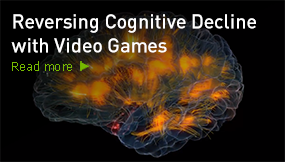

CUDA Brings the Steadicam to Coronary Care
Coronary care procedures challenge physicians to make instant, life-saving decisions while working with arteries and veins that pulse and move with every heartbeat. Parallel computing is helping make this on-the-spot medical care easier and safer through enhanced image processing that provides physicians a steadier view.
Eldad Klaiman at Volcano Corp. uses CUDA to accelerate the software code in coronary diagnostic care systems. GPUs can help visualize arteries and select the best frame for analysis, allowing physicians to assess the dimensions and severity of a lesion. With a stabilized, enhanced image, physicians can better view X-ray streams to see the location of coronary devices as they're maneuvered within the body. And the imaging technology can automatically detect a balloon or stent inserted into a vessel, helping physicians position the device correctly.
More on Klaiman's work
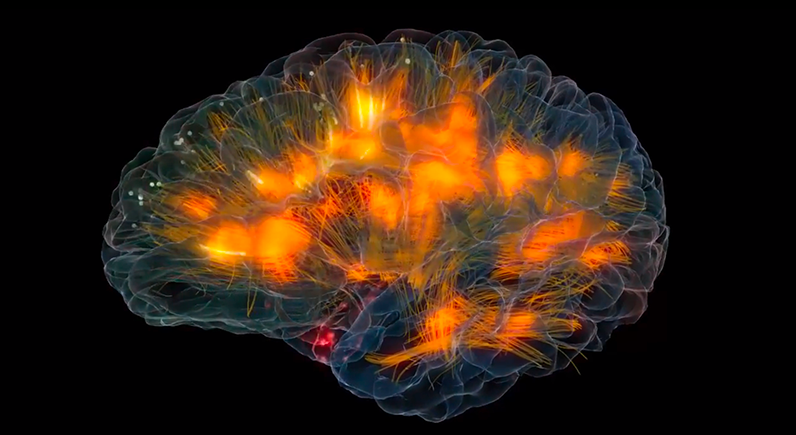
Reversing Cognitive Decline with Video Games
Cognitive disorders such as dementia are typically treated with drugs that lack precision. They affect the entire brain, rather than specific pathways within it, and they perform in ways that are poorly understood. Neurologist Adam Gazzaley, founder of the Neuroscience Imaging Center at UCSF, is using video games to help improve attention, memory and decision-making in measurable ways.
Gazzaley's research replaces pills with virtual reality headsets, mobile electroencephalography technology and transcranial electrical brain stimulation gear. It gathers real-time feedback about the brain to create testable, quantifiable and targeted treatments, in what he hopes will become the first video game to be certified by the U.S. Food and Drug Administration.
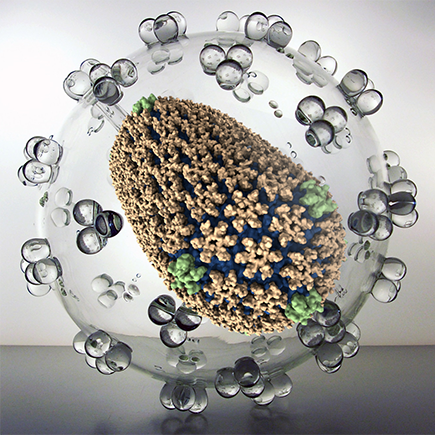
Accelerating HIV Research
Human immunodeficiency virus (HIV) has killed an estimated 25 million people and infected 34 million more. Understanding the virus's cellular structure gives scientists a leg up on understanding how it afflicts the human body, and how to combat its effects.
Researchers at the University of Illinois at Urbana-Champaign (UIUC) used NVIDIA Tesla GPU accelerators on the Blue Waters Supercomputer to run the first all-atom simulation of HIV. As a result, they were able to determine the precise chemical structure of the HIV's capsid, a protein shell that protects the virus's harmful genetic material. By studying the capsid's makeup, scientists can develop antiviral drugs to target and perhaps destroy the virus, saving countless lives.
More about UIUC's Breakthrough
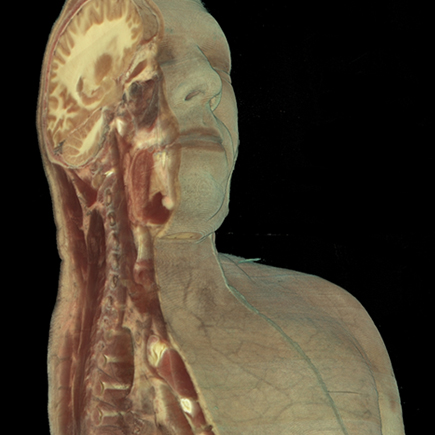
A 3D View Into the Body
One of the most intriguing uses of GPUs is its application to data sets that represent the human body. Divvied up into high-resolution, 3D slices by imaging devices such as CT, ultrasound and MRI scanners, the body amounts to gigabytes upon gigabytes of data that offers doctors and medical researchers an unprecedented view into the human form. Processed by GPU-powered algorithms, this immense amount of data can provide doctors a realistic 3D view of a beating heart within a patient's chest or the real-time brain activity of a stroke victim, facilitating faster, better diagnoses.
Medical students at the New York University School of Medicine wear NVIDIA 3D Vision glasses to dissect virtual cadavers projected onto screens, with different parts and systems of the body brightly colored for identification. Forensic scientists are experimenting with similar technologies for use during autopsies to unobtrusively determine the cause of death of individuals. The future promises animated, searchable anatomical maps that doctors, researchers and laypeople alike can use as easily as online street maps.
More on Virtual Anatomy | More on Virtual Autopsies
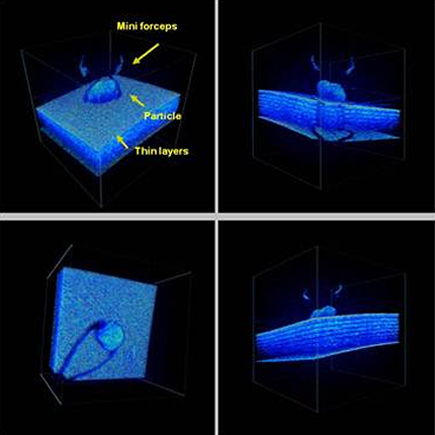
Moving Microsurgery Forward
Operating on a person's eye or brain is a delicate business. Conventional microsurgery is limited by the surgical microscope, which constrains a surgeon's field of view and depth perception. To overcome these limitations, a researcher at Johns Hopkins University is using GPU-accelerated technology to create 3D images of the microstructures and tissue planes beneath the viewable surface of the area under a surgeon's examination.
Called interventional Optical Coherence Tomography (OCT), the non-invasive technology provides surgeons with micrometer-level resolutions at ultra-high speeds – there's no waiting for images to be processed – making it highly suitable for guiding microsurgery. GPU acceleration is very cost-effective compared to the overall cost of a conventional OCT system and no optical modifications are required. With detailed 3D images provided in real time, surgeons have a more complete view of a situation and can intervene immediately and more accurately, diminishing surgical risk and improving outcomes.
More on Tools for Microsurgeons
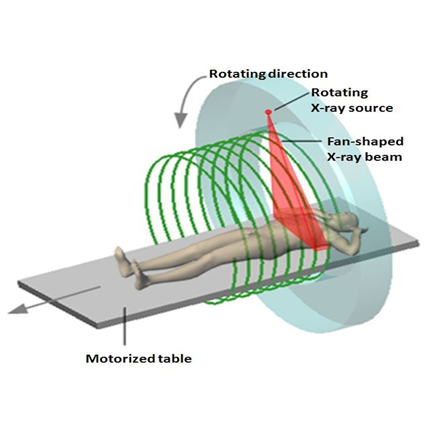
Reducing Radiation Exposure
Medical imaging, in the form of X-rays and CT scans, offers tremendous benefits to patients. However, the risks from radiation exposure accumulate over a person's life. This is an increasing concern given the proliferation of medical imaging use over the last few decades – by a factor of seven per person in the U.S. since 1980, according to one report. Researchers at Rensselaer Polytechnic Institute in New York are developing GPU-based technology to minimize the amount of radiation that needs to be delivered to patients.
Using highly realistic 3D models and the parallel processing abilities of GPUs, researchers plan to calculate the precise dose of radiation a patient's organ receives from a scan. Moreover, they expect to reduce the time it takes to make these calculations from 10 hours (with CPU-only technology) to less than a minute. In the process, they hope to extend the massive yet affordable parallel computing power of GPUs to resource-constrained hospitals around the world.
More on GPUs in Radiology
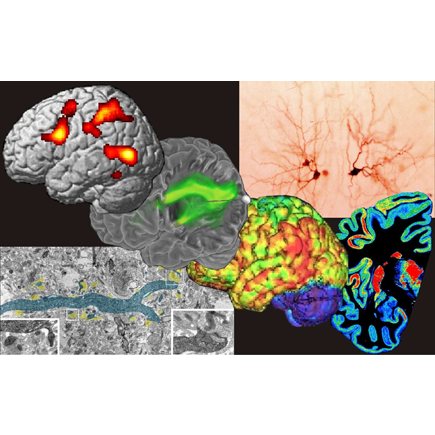
Modeling the Human Brain
Unlocking the mysteries behind neurological disorders such as autism, multiple sclerosis and Alzheimer's disease requires an intimate understanding of the structure and inner-workings of the human brain. With a network of 100 billion interconnected neurons, the brain is exquisitely complicated. Creating a precise, realistic model of it is an extremely complicated task that requires tremendous computational resources.
Using a GPU-accelerated supercomputer, researchers from Germany's Jülich Institute of Neuroscience and Medicine are combining images of microscopic tissue with those from an advanced 3D polarized light imaging technique that provides highly detailed information about the direction and the inclination of the brain's nerve fiber tracts. The resulting 3D model will give researchers a previously unattainable level of visibility into brain architecture, function and interconnections, and is expected to shed new light on the causes of some of the most debilitating neurological diseases.

Computer Game Therapy
Video games are fun. Fun motivates learners. Therefore, video games motivate learners. Therapists in Italy are using this logic to help people of all ages overcome certain speech and mental deficits. As newer computers are equipped with increasingly powerful graphic cards, video games and applications are becoming ever more sophisticated with greater realism and improved 3D imagery.
This innovation is a boon to the researchers behind Vi.Re.Dis, who are developing virtual reality-based therapies to assist patients in developing their visual memory, storing complex pathways and developing predictive thinking skills. Early work has shown the power of video game-based methodologies to improve cognitive performance and sustain motivation throughout the therapeutic process.
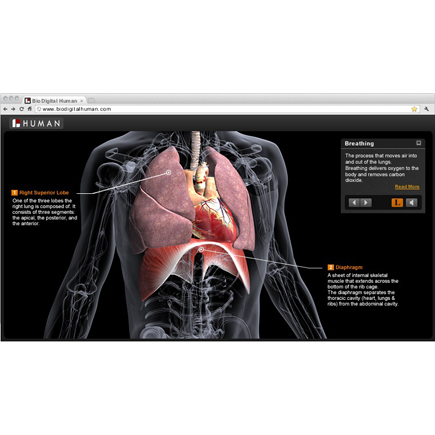
Google for the Ganglia
Densely worded medical reference texts had long been the standard for people trying to understand a new diagnosis or treatment. With the advent of the web, the same hard-to-digest text largely moved online. BioDigital is transforming medical communication with BioDigital Human, a GPU-enabled website that navigates the inner workings of the human body in full-color, high-resolution 3D detail.
Much like Google Earth for the planet's streets and highways, BioDigital Human allows people to explore anatomy, diseases and treatments via a detailed model of the organs and systems that make up the human body. The visual nature of BioDigital's platform makes the body and its conditions dramatically easier to understand. With GPUs handling the processing, people can see the body's systems working together as a cohesive unit – the heart pumping, lungs expanding and diaphragm moving – simultaneously and in real time.
More on BioDigital and BioDigital Human
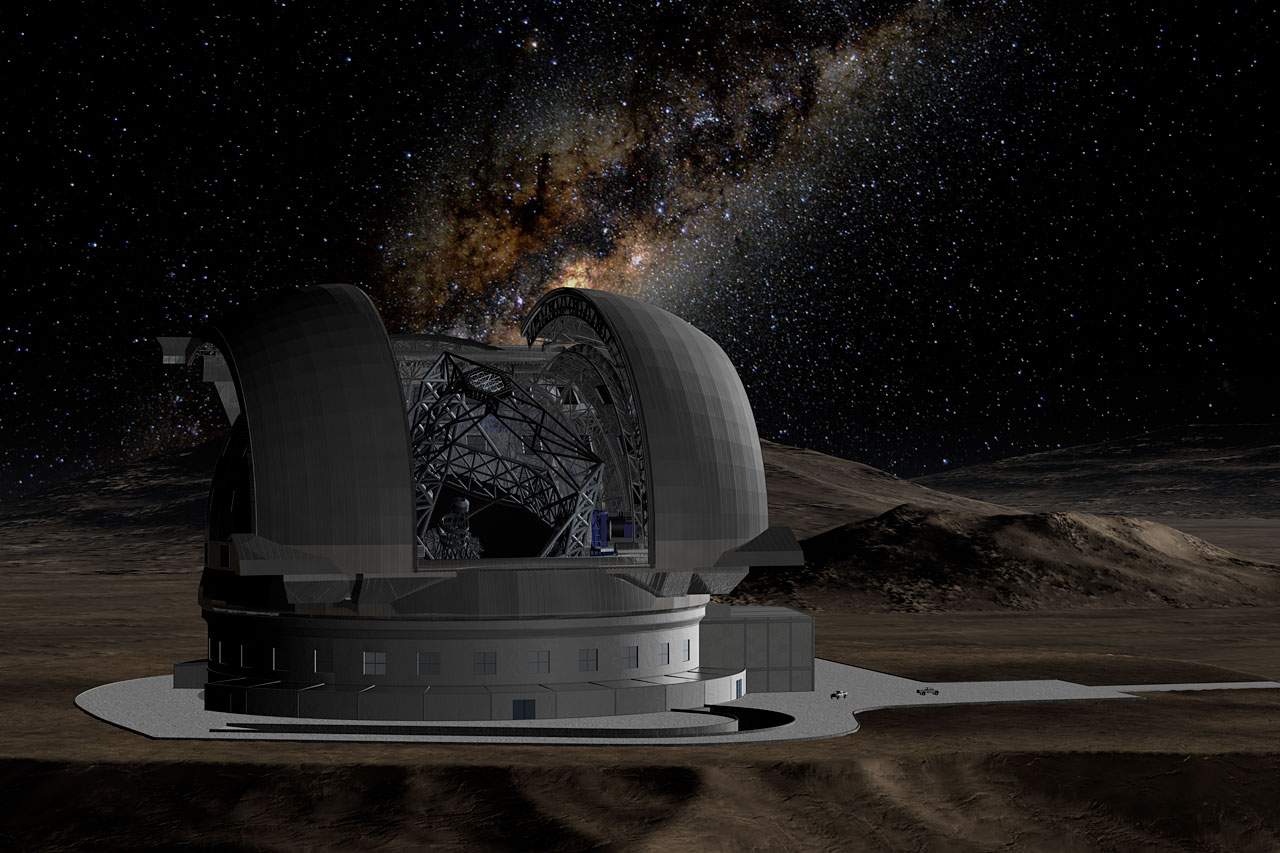
Seeing Through the Atmosphere
Earthbound telescopes, no matter how powerful, capture images distorted by atmospheric turbulence. Space-based telescopes avoid this problem, but are incredibly costly to deploy. The 40-meter diameter European-Extremely Large Telescope (E-ELT), located in Chile, will be the world’s largest telescope when it comes online in 2024. It will overcome the challenge of atmospheric distortion with the help of NVIDIA GPUs.
Using an instrument called MOSAIC, astronomers can compute the effects of atmospheric turbulence on images from the E-ELT and reconstruct them to compensate for the distortion. A real-time simulation of the system used four NVIDIA Tesla K20c GPUs to generate the clearest images of the universe ever captured — 15 times sharper than those captured by the Hubble Space Telescope.
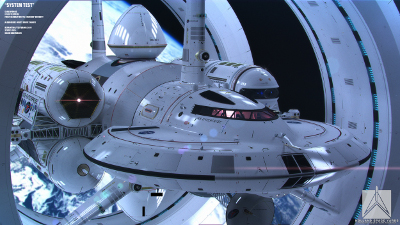
Surpassing the Speed of Light
Two decades ago, physicist Miguel Alcubierre suggested a way to bend space and time around a spacecraft — and prove Einstein wrong that nothing can travel faster than light. NASA physicist Harold White and his Advanced Propulsion Team have been researching a way to make this faster-than-light spacecraft a reality.
Digital artist Mark Rademaker used an NVIDIA GeForce GTX TITAN graphics card to build images based on White’s mathematical research. Inspired by the International Space Station as well as Star Trek, the intricate the warp drive design depicts a spaceship sandwiched within two rings that could theoretically manipulate space and exceed the speed of light. If this ship becomes a reality, a light year could turn into a few days of travel.
More about the warp drive
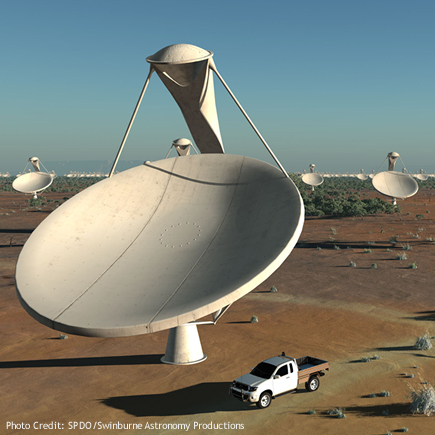
From Local Weather to
Deep Space
For local weathermen and astronomers alike, accurately understanding what’s going on “outside” – whether in the atmosphere or in deep space – requires sophisticated computational models and immense computing power. NVIDIA technology is helping meet these challenges by speeding up performance times, cranking up processing power and dialing down energy consumption.
For example, NVIDIA GPUs will play a key role in the computational power of the most ambitious astronomy project on the planet – the Square Kilometre Array. Designed to pierce the mysteries of the cosmos, this mammoth radio frequency telescope will be 10,000 times more powerful than any telescope currently in use. Closer to Earth, meteorologists at NASA’s Goddard Space Flight Center are using NVIDIA GPU technology to create more accurate global climate models by vastly improving the resolution of cloud system simulations.
More on Square Kilometre Array | More on Climate Modeling
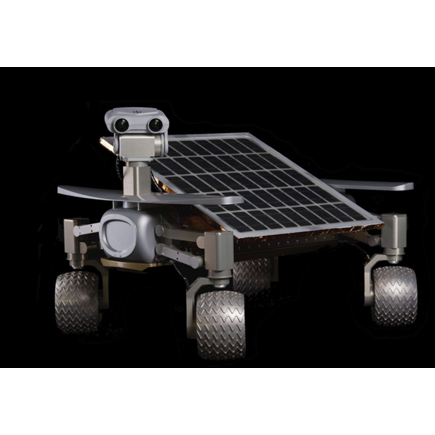
Mission to the Moon
A team of German scientists and engineers is using NVIDIA Tesla GPUs to accelerate computationally intensive applications in all stages of its effort to earn a spot in space exploration history by winning the Google Lunar X Prize. The global competition will award $30 million to the first privately funded team to safely land a rover on the surface of the moon by 2015, drive it at least 500 meters and transmit information back to Earth for further study.
The "Part-Time Scientists" team is using Tesla GPUs to calculate a wealth of information, such as simulating millions of different mission scenarios and improving launch and landing techniques of their rover, Asimov. Once Asimov has reached its destination, the team will use the massive computational power of Tesla GPUs to navigate and monitor the rover's activities and generate highly detailed lunar maps from the stereoscopic 3D images it takes.
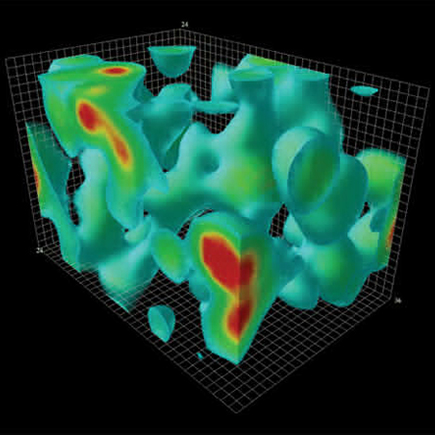
Exploring the Big Bang, Efficiently
Germany's Bielefeld University is delving deep into the physics of matter in the moments after the Big Bang using an NVIDIA GPU-based supercomputer that delivers 125 times the performance of its previous system with much better energy efficiency. While the world's largest particle accelerators, like the Large Hadron Collider, are used to study the state of early matter experimentally, scientists use the Bielefeld University supercomputer to research quarks and other extreme forms of matter through sophisticated simulations in 4D – that is, 3D views modeled over the course of time.
Because GPUs use parallel processing to break down complex problems into many smaller tasks that run simultaneously, a few GPUs can perform certain tasks much faster than a lot of CPUs. Plus, GPUs are engineered for optimal performance per watt, so supercomputers like Bielefeld University's consume less energy for power and cooling, even while realizing incredible performance gains.
More on the Bielefeld University Supercomputer
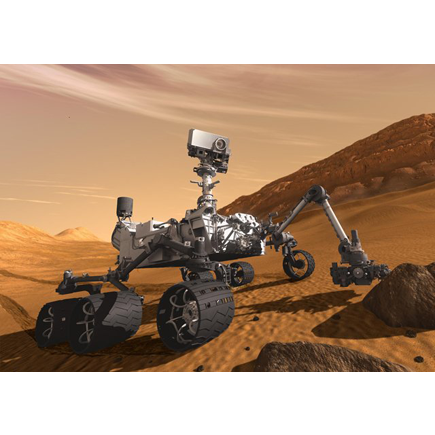
Out of This World 3D Gaming
Navigating a rover on the surface of Mars is no easy challenge. It takes 14 minutes to get a signal to the Red Planet, which is 352 million miles away from Earth. To avoid dangerous missteps, the team at NASA's Jet Propulsion Laboratory controls its rover, Curiosity, using off-the-shelf NVIDIA 3D Vision glasses to plan missions in a 3D, game-like environment.
The virtual environment simulates Martian terrain captured by the rover and includes a detailed 3D model of Curiosity. Using 3D Vision glasses and NVIDIA Quadro GPUs, every movement of the rover and its robotic arm are then modeled before instructions are sent to ensure each motion will be unimpeded.3D Vision provides the visual fidelity and performance needed so the team can watch a realistic rendering of Curiosity moving on the surface of Mars in real time, helping NASA explore the planet and achieve its scientific goals faster.
More on Mars Rover Curiosity and NVIDIA 3D Vision

Wringing Watts Out of Wind Power
Transforming wind power into electricity is challenging in frigid regions, where ice can impede the efficiency of wind turbines. To garner more energy out of every gust, scientists are studying when and how ice begins to form – down to the quadrillionth of a second and on an atomic level for hundreds of droplets.
To simulate how hundreds of millions of water molecules freeze on the surfaces of whirling turbine blades, General Electric is using the NVIDIA Tesla accelerator-powered Titan supercomputer at the Oak Ridge National Laboratory. By porting CPU code to a hybrid CPU-GPU code, GE and Oak Ridge scientists were able to model vast numbers of water molecules over a wide variety of surfaces five times faster than previously possible.
More on GE's research.
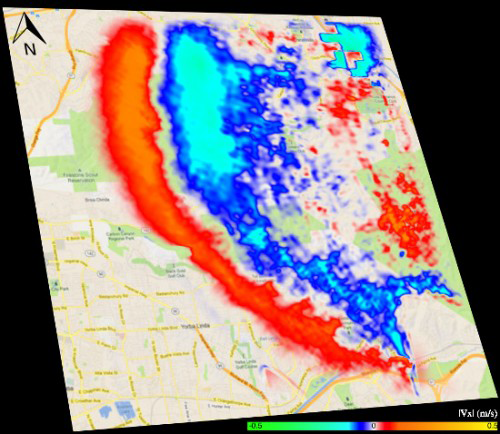
Better Earthquake Preparation
Deadly earthquakes occur with devastating regularity. A 9.0-magitude earthquake off the coast of Japan killed more than 15,000 people and caused over $200 billion worth of damage. More than 200,000 people died from a quake in Haiti. A massive temblor in Indonesia killed an estimated 230,000 people. Simulating high-frequency quakes, which can inflict massive damage on low-rise structures, is a daunting computational challenge.
However, a team of researchers at the San Diego Supercomputing Center has developed a GPU-based seismic wave propagation code, which simulates how earthquakes make the ground move. It enables quake modeling for the low-rise structures that most building engineers care about, helping engineers design safer buildings and retrofit high-risk ones.
More on SDSC's research.
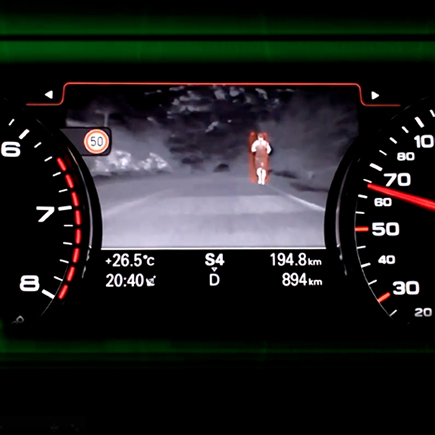
Safer, Smarter Cars
Improving automotive safety is increasingly an IT challenge. NVIDIA is working with car manufacturers like Audi AG to develop new safety systems that can detect pedestrians, read speed limit signs, improve navigation and help avoid collisions. Using cameras to analyze a car's surroundings, identify potential hazards and alert the driver is a task that requires the massive parallel processing of data, which is the GPU's specialty.
One of the safety concepts in development with GPUs at the Volkswagen (Audi's parent company) Electronics Research Laboratory is a feature known as pedestrian detection, which can identify children or objects in low-light situations. Work is also being done on collision avoidance, which allows cars to detect an impending collision and help stop the vehicle or prepare the vehicle for impact. The tight integration of these systems with the vehicle, as well as their simple user-interface and realistic graphics, will enable safer, more intuitive driving by providing critical information that can be easily understood with a quick glance.
More on Safer Driving
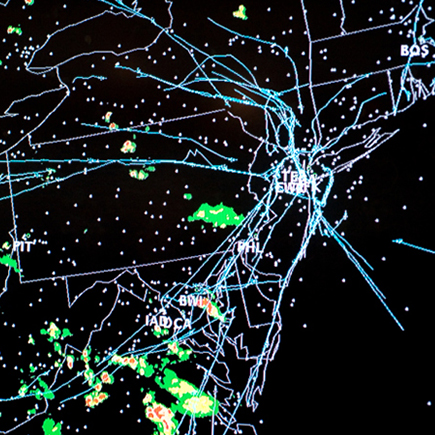
Modernizing Air Traffic Control
The current design and management of airspace and traffic flows is conducted through manual, human-centered processes. Reducing congestion and delayed flights requires enormous computational resources as tens of thousands of daily flight paths through hundreds of airports must be analyzed.
NVIDIA is working with companies like Mosaic ATM and Optimal Synthesis to better automate air traffic management, so air traffic controllers can manage the complexities of airspace, varying weather conditions and airport closures in real time. By integrating NVIDIA GPU-powered computing resources with the current human decision-making process, future air traffic control systems will be able to manage more planes in the sky and on the tarmac while improving travel safety.
More on Air Traffic Management
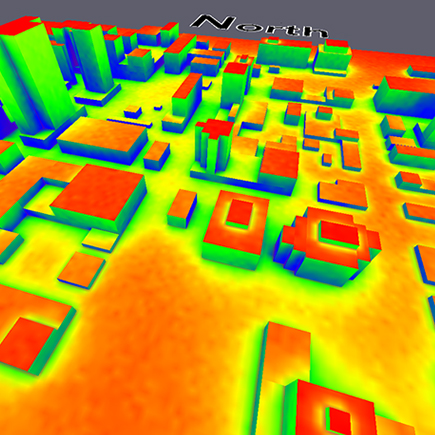
Greening Urban Planning
Currently at 7 billion, the human population is expected to crest 9 billion by 2050, with most of the growth occurring in cities. As urban areas become ever more densely populated, reducing energy use and mitigating air pollution will be critical. For decades, urban planners have attempted to make cities more sustainable through green infrastructure projects, such as parks, alteration of building rooftops and the use of novel paving materials for streets and parking lots. However, understanding the complex interactions among these projects, the environment and urban microclimates on citywide scales is a complicated challenge.
To bring greater insight to this issue, computer scientists at the Universities of Utah and Minnesota are collaborating on developing large-scale simulations of urban environments using extremely fast and inexpensive modeling tools that run on GPUs. This includes an interactive and immersive virtual environment that examines the dynamic physical processes associated with energy use and pollutant dispersion in settings ranging from neighborhoods to cities to metropolitan areas. With a better understanding of these relationships, urban planners can design future projects and policies that optimize green infrastructures and energy conservation while minimizing air pollution in urban landscapes.
More on Urban Design
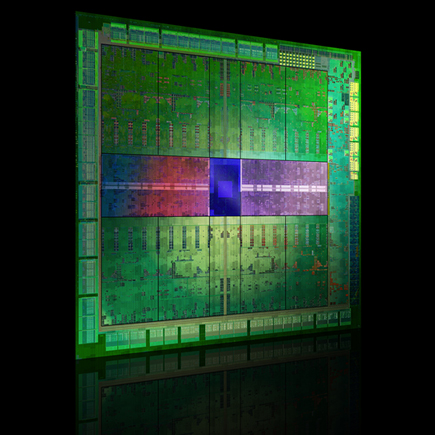
Doing More with Less
The energy efficiency of computing products affects nearly everyone. CIOs want to increase the performance of their data centers while driving down energy costs — goals that are seemingly at odds. Researchers, scientists and engineers can face serious limitations in their work due to the power consumption of high performance computing systems. Meanwhile, people all over the world have experienced how limited battery life can pull the plug on their access, pleasure and productivity while using mobile devices.
GPUs, however, are inherently more energy efficient than other ways of computation, and NVIDIA has long been focused on making its GPUs the most energy-efficient processors in the market. Because they're optimized for performance per watt and throughput, rather than absolute performance, GPUs have grown from their computer-gaming roots to enhance everything from smartphones and tablets to medical imaging and oil exploration.
More on Energy Efficiency

Modeling Changing Climates
The effects of changing climate patterns are being felt around the world. With ever more powerful supercomputers, scientists can create sophisticated models of the Earth to simulate climate systems, and make more accurate predictions about the change around us.
The U.S. Department of Energy is using NVIDIA technology to build GPU-accelerated supercomputers for complex climate modeling. “Summit,” at Oak Ridge National Laboratory, and “Sierra,” at Lawrence Livermore National laboratory, will incorporate Tesla GPU accelerators and NVLink technology to perform 2-5x faster than today’s top supercomputers. Scientists will use the systems to model changes in the water cycle, including changing precipitation patterns, and the stability of the Antarctic ice sheet, which contributes to rising sea levels.
More on climate modeling and the new Oak Ridge supercomputer
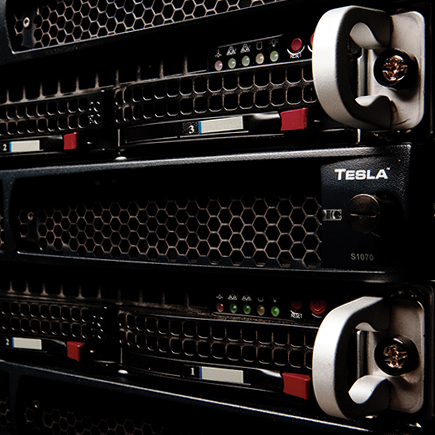
A Supercomputer in Every Scientist's Pot
Traditionally, supercomputers have been large and expensive, making them accessible to only a select few scientists. The GPU’s parallel processing capability divides complex computing tasks into thousands of smaller tasks that can run concurrently. As a result, scientists and researchers across the globe – from Belgium to Mexico – are seeing results in days instead of months, even minutes instead of days.
NVIDIA also has worked with HP to offer the “GPU Starter Kit” as an alternative to the large footprints and lofty price tags of high-performance computers. Pre-configured so researchers can hit the ground running, the kit includes a cluster of HP ProLiant servers accelerated by NVIDIA Tesla GPUs – the computational engine under the hoods of the world’s fastest supercomputers. It also includes a broad set of development tools at discounted prices. With the power of a GPU-based supercomputer in every scientist’s lab or office, the potential for breakthroughs is limited only by their imaginations.
More on Improving Access to Supercomputing | More on GPU Starter Kit

Helping to Ace the Space Race
Rocketry poses complex aeronautical, materials and computational problems, and each launch can cost tens of millions of dollars. This makes it essential to run complex, accurate design simulations quickly. India, which operates one of the largest space research agencies in the world, uses NVIDIA GPUs in its most powerful supercomputer (named SAGA) to accelerate and improve the design and analysis of its satellite launch vehicles.
SAGA runs compute-intensive, detailed computational fluid dynamics simulations that optimize launch vehicle design for improved performance under a range of conditions – and does so 7-8 times faster than with a CPU-based system. Harnessing the power of GPUs enables India's space agency to reduce the time needed to create, simulate and verify new launch vehicle designs from weeks to days, while dramatically improving the overall quality and durability of designs.
More on India Space Program
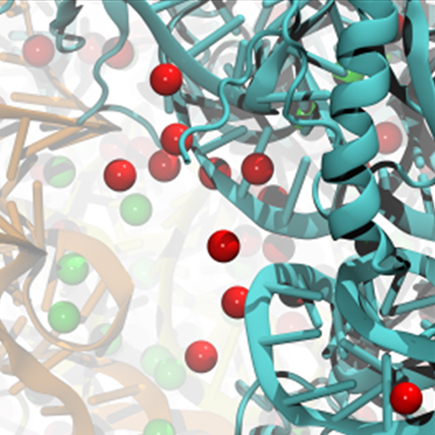
Super-Sized Sampling and Simulations
Whether exploring insect behavior or potential pharmaceuticals, GPUs enable massive sampling and simulations that advance the work of scientists. Biologists are using GPU-accelerated programs to better understand the complex and coordinated behaviors that result from social interactions among individuals, such as swarming locusts and cells within tissue. Thanks to the exceptional performance of GPUs, scientists can now cost-effectively analyze the workings of biological systems using simulations of life-like group sizes - such as millions of ants in a colony - over evolutionary timescales and in realistic physical environments.
In the field of molecular dynamics, the GPU has allowed scientific inquiry to move forward without being limited by the amount of sampling that can be done. Molecular dynamics uses complex models to create realistic descriptions of atomic interactions. In areas such as drug discovery and materials development, this can involve examining literally millions of variations of a molecule's three-dimensional shape and other characteristics. Projects like AMBER, which more than 10,000 scientists use for the simulation of biomolecules, use GPUs to dramatically speed up performance while adding significant new functionality.
More on Swarm Behavior | More on AMBER
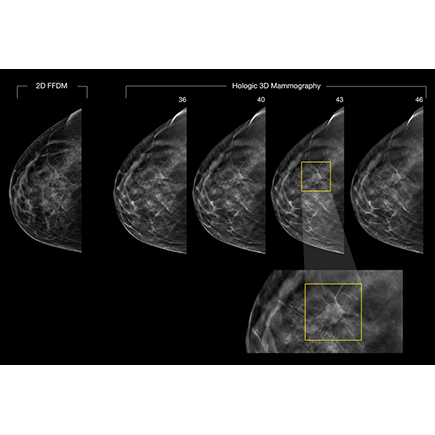
Bettering Breast Cancer Detection Rates
One key to improving breast cancer survival rates is early detection. Conventional digital mammography, produces a single image of overlapping tissue, making it hard to detect breast cancer. Hologic Inc., a maker of medical imaging systems, uses GPU-acceleration applications to enable 3D mammography, or tomosynthesis, taking multiple images of the entire breast.
Using the same scanners as conventional digital mammography, tomosynthesis allows radiologists to see through layers of dense tissue and examine the breast from every angle. The enhanced imaging offers greater ability to pinpoint abnormalities, detect tumors—while reducing false positives—and save patients from unnecessary biopsies. The GPU computing-based technique also allows for images to be processed in real time, reducing wait times for screening and diagnostic results.
More on tomosynthesis.
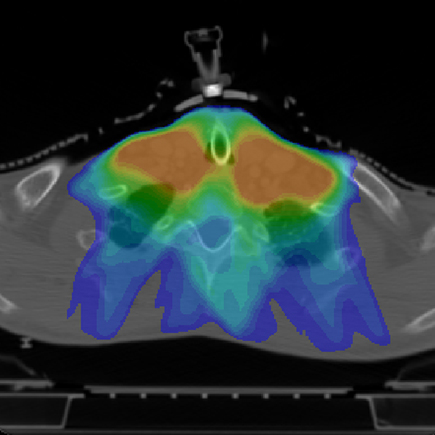
GPU-Accelerated Cancer Treatment
Radiotherapy has proven to be an effective treatment for many types of cancer, the second-leading cause of death in the U.S. The treatment involves directing a precise yet lethal beam of radiation at a patient's tumor to kill cancerous cells, following a pre-designed treatment plan. This happens over the course of several weeks, making it vital that the treatment plan is adapted to the patient current anatomy, which can vary from day to day due to changes in a tumor's size and shape.
Current radiotherapy methods rely on treatment plans that are up to several weeks old. However, researchers at Moore's Cancer Center at the University of California in San Diego are using GPUs to re-optimize the treatment plan through a dynamic process called online adaptive radiotherapy, or ART. Using GPUs, the medical team can develop a new treatment plan based on patient's new geometry in a couple of minutes, so the radiation is still focused on the tumor itself – significantly reducing the amount of radiation administered to healthy tissues. The outcome of this research, which is entering clinical trials, could have a profound impact on cancer treatment in the U.S. and, potentially, worldwide.
More on ART
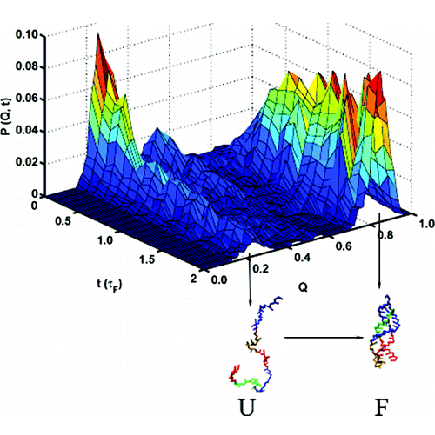
Gaming a Cure to Cancer
GPUs are extremely good at their original purpose: creating realistic images on video game screens. Researchers like Samuel Cho, a biophysicist and computer scientist at Wake Forest University, take these same GPUs, which control every change to a pixel on a screen, and repurpose them to model biomolecular processes, controlling every physical change to a molecule, protein or enzyme.
As gaming has increased in popularity, the cost of GPUs has dropped significantly while their power has risen dramatically. As a result, today's GPUs make previously impossible types of scientific inquiry possible, and researchers can compare their simulations to experimental data. By creating biological simulations of how, for example, an RNA molecule forms an enzyme found only in cancerous cells, Cho can gain insight into the development of potential cures for cancer.
More on Professor Cho's Research
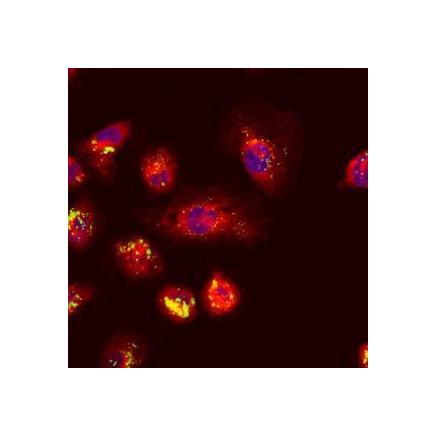
Harnessing Light to Detect Cancer
Catching early signs of cancer is a key factor in successfully treating it, and increasingly researchers are using parallel computing to develop crucial diagnostic technology. Researchers at the University of Otago in New Zealand are using biophotonics – the interaction between biology and the particle properties of light – to improve early diagnostics for cancer as well as other diseases. Similarly, researchers at the Applied Physics Institute at the Russian Academy of Science are simulating light and radiation propagation through tissue in 3D to identify markers indicating the locations of abnormal cell proliferation, a process called diffuse fluorescent tomography.
NVIDIA GPUs and the CUDA programming model reduce from days or hours to minutes the time needed to review the intensive image and signal processing and computational modeling that result from these investigations. With more efficient diagnostics, patient therapy and follow-up care can also improve, thus improving health outcomes and reducing healthcare costs.
More on Detecting Cancer with DFT

Mapping the Genome
The field of genomics – the study of an organism's hereditary information – holds the key to personalized medicine and deeper insight into diseases. However, one of the primary hurdles the science faces is managing the enormous amount of data required to evaluate genetic sequences and accurately align many small sequences against entire genomes. GPUs are helping genomics researchers save dramatic amounts of time by using parallel processing to break down complex computing problems into many smaller tasks that run simultaneously.
Projects that once required supercomputers often can now be run on individual machines. By accelerating computations that used to take hours or days, GPUs can enable scientists to interact with their data in near real time. For example, using Life Technology's Ion Torrent solution equipped with GPUs, German and Chinese scientists were able to crack the genetic code behind a deadly strain of E. coli. The researchers sequenced the bacteria's genome in three hours, which helped doctors pinpoint the source of the outbreak, develop a test to detect the disease and mitigate its spread.
More on Genomics Research
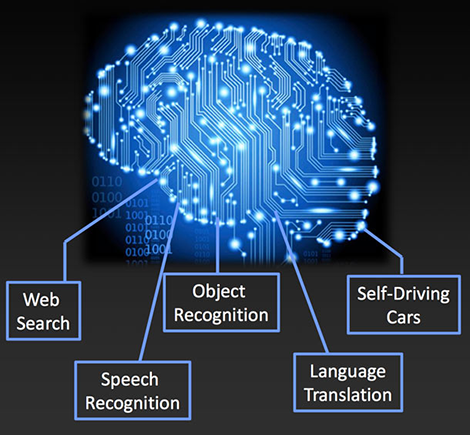
Accelerating Artificial Intelligence
Advancements such as self-driving cars and deeply understanding the human genome rely on machine learning — the science of designing computers to teach themselves, without being explicitly programmed. A research team at Stanford University helped advance this fast-growing branch of artificial intelligence with the creation of the world's largest artificial neural network, built to model how the human brain learns.
Creating large-scale artificial neural networks is extremely computationally intensive. The Stanford team used GPU-accelerated servers to build an 11.2 billion-parameter neural network — 6.5 times bigger than the previous largest network — while using significantly less computer equipment. Bigger, more powerful neural networks will improve the accuracy of machine learning, enabling computers to model more human-like behavior.

Latest Buzz in Robot Research: Bee Brains
While getting a robot to perform pre-programmed tasks has proven to be a relatively easy feat for scientists, autonomous robot performance remains an elusive goal. In their quest to build the world’s first flying autonomous robot, researchers at the Universities of Sheffield and Sussex have chosen a novel “pilot” for their craft: a model of the honey bee’s brain structure.
Obviating the need for a large, expensive supercomputing cluster, the scientists used GPU accelerators to provide efficient data processing for simulating a bee’s brain on a single PC desktop. Recreating a bee’s brain could also help scientists build future robots that can identify specific gases and odors, which would be useful for search-and-rescue missions and agricultural development projects.
More about GPUs in Artificial Intelligence

Enforcing Ethics with Lasers
Raising society's awareness about unethical production processes in the electronics industry can often mean using smartphones and tablets that, ironically, have themselves been produced using unethical means. Mineral mining, for example, frequently occurs under hazardous conditions. Figuring out where these materials come from has proven to be tricky, as a paper trail can be fabricated.
Materialytics, however, can determine the origin of a range of metals and minerals using a technique known as laser-induced breakdown spectroscopy. With this method, a laser compares the unique light signature of an examined material against a catalogue of original sources. The company uses Quadro GPUs to power the data-intensive comparison process, in which more than 500 billion data points might be gathered for even a small-scale test.
More on Materialytics

Preventing Potential Pandemics
One of the primary reasons the 2009 H1N1 influenza outbreak was so infectious and deadly was due to frequent virus mutations that rendered existing anti-influenza drugs ineffective. Quickly identifying new mutations and developing inhibitor drugs to minimize the spread of the deadly virus would be key to preventing future pandemics.
Researchers in the United Kingdom and Thailand ran a large number of advanced simulations using a small computing cluster equipped with NVIDIA GPUs. This allowed them to observe how a multitude of H1N1 mutations could cause changes in the chemical and biological structure and behavior of a key enzyme of the virus. Armed with this information, they were able to determine, for the first time, what made the H1N1 virus resistant to existing antiviral drugs.
More on Researching Mutating Viruses






